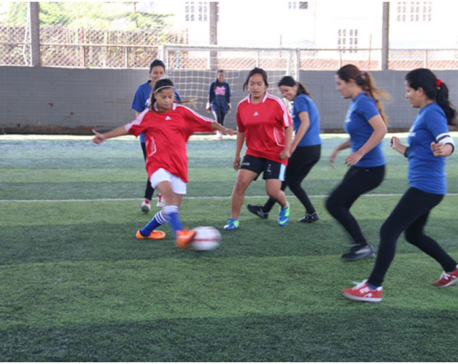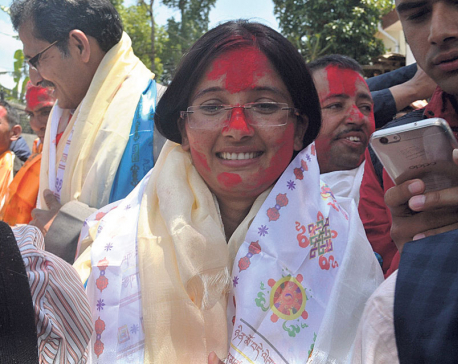
OR
Local Level Election
Dalit, minority women to see big increase among elected
Published On: February 28, 2017 07:37 AM NPT By: Prakash Timalsina | @prakashujyalo
KATHMANDU, Feb 28: One of the key demands of the people’s movement in 2006 was increased representation of women, Dalits and people from marginalized communities in various state structures. The local elections scheduled to be held on May 14 are set to largely address this demand.
At least 6,554 women are to be elected from among the Dalits and minority communities alone in the local polls, significantly increasing the participation of women from these traditionally backward groups in decision-making bodies. The representation of women is set to increase to this extent as the Local Level Election Act makes it mandatory to elect at least one woman among the total of five members from the Dalit and marginalized communities in each ward committee of village councils.
This is the first time in Nepal’s history that such a large number of women from Dalit and minority communities are being elected on a mandatory basis. Although the males from these communities do not have any mandatory quota, their space is secure in the open category.
As per the report submitted by the Bala Nanda Paudel-led Local Level Restructuring Commission, at least 6,554 wards in the proposed municipal and village councils will elect at least one such woman from each ward. “The new law makes it mandatory to elect at least one Dalit woman and a woman from a minority community in each ward,” said UML lawmaker Rewati Raman Bhandari. “It is not possible to form a local unit without their representation.”
Any woman from the Dalit or marginalized communities with a minimum age of 21 years can file candidacy in the local level polls. Section 17 (5) of the Local Level Election Act 2017 seeks to increase the representation of women by making it mandatory for all political parties to field the candidacy of one such woman candidate in each ward.
While two women elected under this provision can make it to the village council, the number of such women making it to the municipal council will be at least three. Section 6 (5) of the Act makes it mandatory to take two and three women securing maximum votes in their wards on board the village executive and municipal executive committees respectively.
If we go by the recommendations in the LLRC report, at least two women each will be elected in 461 executive bodies of village councils and at least three women each in the executive bodies of 258 municipal councils.
The women from Dalit and marginalized communities elected in this fashion will be able to participate in the formulation of local level laws and their implementation. Besides this, women from Dalit and marginalized communities will have one representative each in all 75 district coordination committees. This body will act as a bridge between the district on one hand and the village and municipal councils on the other in the formulation of laws and in development work.
Lawmaker from Rastriya Janamukti Party (Loktantrik) Seema Kumari BK said the Local Level Election Act that ensures such a high degree of representation for Dalit and marginalized women is historic. “This will not only elevate women out of their traditional household spheres but also help develop their leadership skills,” she said. “This will also provide an opportunity for such women to prove their ability.”
Lawmaker BK expressed confidence that increased representation of women from Dalits and marginalized communities in the local bodies will help to do away with the practice of so-called untochability and bring revolutionary changes in society.
You May Like This

Futsal for the women, by the women and of the women!
KATHMANDU, March 19: WE United Project launched the Mahila Premier League (MPL) on March 18 at Grassroots Recreational Center in Mandikhatar. ... Read More...

Women, Dalit, marginalized representation to increase
KATHMANDU, Feb 2: Parliament is set to endorse the Local Level Election Bill that sets out criteria to significantly increase the... Read More...

Over 5,000 women elected in phase one local polls
KATHMANDU, June 21: Over 5,000 women have been elected to the newly created local units in the first round of local... Read More...





Just In
- MoHP cautions docs working in govt hospitals not to work in private ones
- Over 400,000 tourists visited Mustang by road last year
- 19 hydropower projects to be showcased at investment summit
- Global oil and gold prices surge as Israel retaliates against Iran
- Sajha Yatayat cancels CEO appointment process for lack of candidates
- Govt padlocks Nepal Scouts’ property illegally occupied by NC lawmaker Deepak Khadka
- FWEAN meets with President Paudel to solicit support for women entrepreneurship
- Koshi provincial assembly passes resolution motion calling for special session by majority votes






_20220508065243.jpg)






Leave A Comment